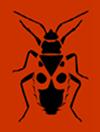黄瓜植株接种球孢白僵菌增强了黄瓜对棉蚜的抗性,增加了蚜虫对松壁威的敏感性
IF 1.2
3区 农林科学
Q2 Agricultural and Biological Sciences
引用次数: 7
摘要
球孢白僵菌(Bals.)Vuill。子囊菌属(Ascomycota: Hypocreales)可以内生定植植物,刺激植物次生代谢产物的产生,具有抗草食活性。研究了球孢白僵菌对棉蚜(Aphis gossypii Glover)的局部毒力,黄瓜接种球孢白僵菌对植物代谢产物的影响,以及对取食这些植物的蚜虫的生理影响。实验采用球孢白僵菌商业配方“Naturalis®-L”,推荐浓度为1.5 ml / L(孢子浓度为2.3 × 107 CFU / ml),分离真菌菌株的浓度相似。无论使用Naturalis®-L还是单独使用分离物,每平方厘米0.03 ml溶液或1 × 103 CFU, 7天后棉蚜成虫死亡率均为100%。接种后28 d,在黄瓜上喷施该菌,其生物碱、类黄酮、酚类、过氧化氢和总叶绿素浓度均高于对照植株。接种球孢白僵菌对丙二醛含量、植株生长和总产量均无影响。蚜虫在接种了球孢白僵菌的植株上取食24小时,其解毒酶(谷胱甘肽- s转移酶、羧酸酯酶和乙酰胆碱酯酶)的活性低于对照。接种植株后,蚜虫的消化酶(脂肪酶、α-淀粉酶、α-葡萄糖苷酶和氨基肽酶)活性降低,超氧化物歧化酶、抗坏血酸过氧化物酶和酚氧化酶活性升高,过氧化氢酶活性降低。接种植株的蚜虫的能量储备(脂质、蛋白质和糖原)较低,它们的繁殖力、寿命和繁殖周期都降低,吡吡虫威的LC50降低了50%。因此,除了直接致病外,接种球孢白僵菌对棉蚜的生理和繁殖性能产生负面影响,可以有效地补充温室黄瓜棉蚜管理的其他策略。*通讯作者;简介棉蚜(半翅目:棉蚜科)是一种多食性的世界性害虫,危害大量农田和温室作物(Ebert & Cartwright, 1997)。它具有快速种群增长的能力,对寄主植物造成直接取食损害,并传播各种植物病毒(Deguine et al., 2017)。棉花蚜虫的管理传统上依赖于使用合成杀虫剂(Kandil等人,2017),这导致蚜虫对各种杀虫方式产生抗药性,并产生了对替代管理策略的需求(Wang等人,2007;Carletto et al., 2010)。欧元。[j] .中国生物医学工程学报,2016,33 (2):391 - 391本文章由计算机程序翻译,如有差异,请以英文原文为准。
Inoculation of cucumber plants with Beauveria bassiana enhances resistance to Aphis gossypii (Hemiptera: Aphididae) and increases aphid susceptibility to pirimicarb
The entomopathogen Beauveria bassiana (Bals.) Vuill. (Ascomycota: Hypocreales) can colonize plants endophytically and stimulate the production of secondary plant metabolites with anti-herbivore activities. We assayed the topical virulence of B. bassiana to Aphis gossypii Glover (Hemiptera: Aphididae), the effects of cucumber inoculation with this fungus on plant metabolites, and the physiological consequences for aphids that fed on these plants. Assays were conducted with both the commercial formulation of B. bassiana, ‘Naturalis®-L’, at the recommended concentration of 1.5 ml / L (yielding a spore concentration of 2.3 × 107 CFU per ml), and with a similar concentration of the isolated fungal strain. Topical application of 0.03 ml of solution per cm2, or 1 × 103 CFU, caused 100% mortality to A. gossypii adults after seven days, whether Naturalis®-L or the isolate alone was used. The fungus grew endophytically into foliage when sprayed on cucumbers at the 2-leaf stage and concentrations of alkaloids, fl avonoids, phenols, hydrogen peroxide, and total chlorophyll were higher than in control plants 28 days after inoculation. Malondialdehyde content, plant growth, and total yield were unaffected by B. bassiana inoculation. Aphids fed on B. bassiana-inoculated plants for 24 h had reduced activities of detoxifying enzymes (glutathione-S-transferase, carboxylesterase, and acetylcholinesterase) compared to controls. Activities of digestive enzymes, (lipase, α-amylase, α-glucosidase, and aminopeptidase) were reduced in aphids from inoculated plants, which exhibited higher activities of superoxide dismutase, ascorbate peroxidase, and phenoloxidase, but lower catalase activity. Energy reserves (lipids, protein, and glycogen) were lower in aphids from inoculated plants, and they exhibited reduced fecundity, longevity, and reproductive periods, and a 50% reduction in the LC50 of pirimicarb. Thus, in addition to causing direct pathogenicity, inoculation of plants with B. bassiana negatively impacted A. gossypii physiology and reproductive performance and could usefully complement other strategies for managing cotton aphids on greenhouse cucumber. * Corresponding author; e-mail: jpmi@ksu.edu INTRODUCTION The cotton aphid, Aphis gossypii Glover (Hemiptera: Aphididae) is a polyphagous cosmopolitan pest of numerous fi eld and greenhouse crops (Ebert & Cartwright, 1997). It has the capacity for rapid population growth, causing direct feeding damage to host plants and transmitting various plant viruses (Deguine et al., 2017). Management of cotton aphids has conventionally relied on the use of synthetic insecticides (Kandil et al., 2017), which has resulted in the aphids evolving resistance to various insecticidal modes of action, and generated a need for alternative management tactics (Wang et al., 2007; Carletto et al., 2010). Eur. J. Entomol. 119: 1–11, 2022 doi: 10.14411/eje.2022.001
求助全文
通过发布文献求助,成功后即可免费获取论文全文。
去求助
来源期刊
CiteScore
2.30
自引率
7.70%
发文量
43
审稿时长
6-12 weeks
期刊介绍:
EJE publishes original articles, reviews and points of view on all aspects of entomology. There are no restrictions on geographic region or taxon (Myriapoda, Chelicerata and terrestrial Crustacea included). Comprehensive studies and comparative/experimental approaches are preferred and the following types of manuscripts will usually be declined:
- Descriptive alpha-taxonomic studies unless the paper is markedly comprehensive/revisional taxonomically or regionally, and/or significantly improves our knowledge of comparative morphology, relationships or biogeography of the higher taxon concerned;
- Other purely or predominantly descriptive or enumerative papers [such as (ultra)structural and functional details, life tables, host records, distributional records and faunistic surveys, compiled checklists, etc.] unless they are exceptionally comprehensive or concern data or taxa of particular entomological (e.g., phylogenetic) interest;
- Papers evaluating the effect of chemicals (including pesticides, plant extracts, attractants or repellents, etc.), irradiation, pathogens, or dealing with other data of predominantly agro-economic impact without general entomological relevance.

 求助内容:
求助内容: 应助结果提醒方式:
应助结果提醒方式:


